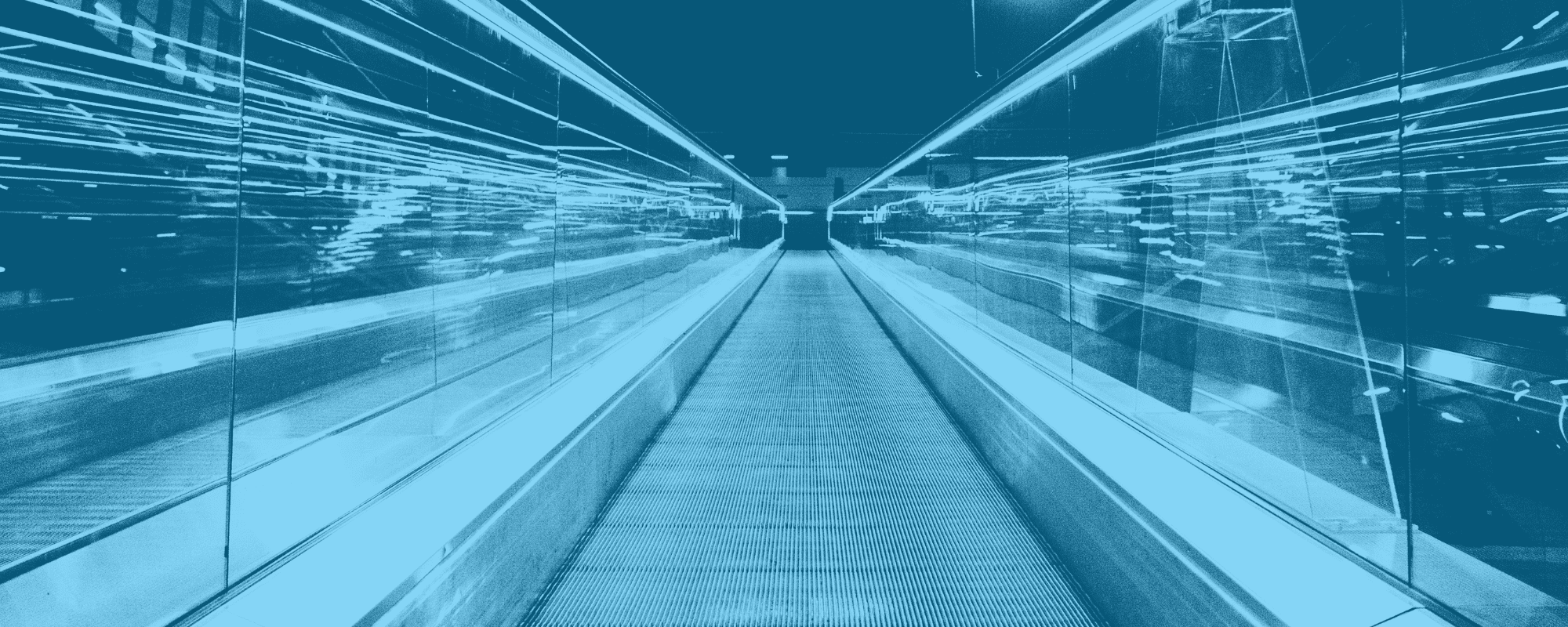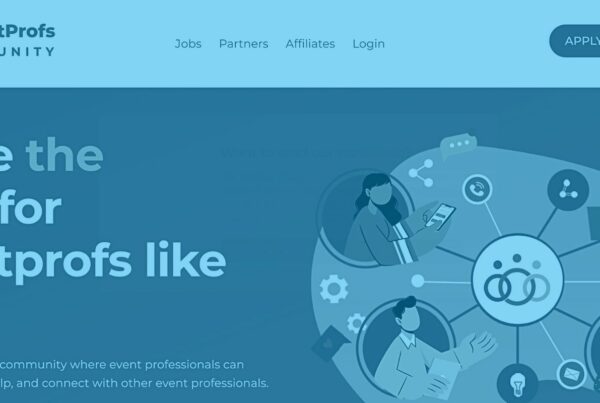How often have you thought about being a futurist? Not necessarily someone who can tell what life will be like tomorrow. But rather someone who has the power to harness data to make awesome decisions. More than awesome, better! And when it comes to the event industry, we all know how predicting the future can come in handy. After all, how many things can potentially go wrong? More often than not, the answer is way too many. And this is exactly where being able to think like a futurist can be extremely helpful.
But what exactly does it mean to be a futurist? And how can you start thinking like one, so your events can go just a little extra smoothly? Well, this week’s Event Tech Podcast is here to answer all of your questions. And joining our amazing hosts Will Curran and Brandt Krueger is a very special guest. Amy Webb is the professor of strategic foresight at the NYU Stern School of Business and the founder of the Future Today Institute. More than that, she is a quantitative futurist. These three are the perfect recipe for an insightful talk on all things futurism. Are you ready to move forward? Press play right now and join us on this exciting journey!
Click here for the full audio transcription.
What Is A Futurist?
The Background
Amy is very much aware that being a futurist isn’t something that clicks right away. What exactly does the job title entail? “In my case, my academic background is game theory and economics and political science”, she explains. “Usually, game theory and economics are a base component for a lot of people who work in strategic foresight”. And if you feel like this might be your thing, “there are plenty of places where you can get bachelor’s, master’s, and even PhDs in strategic foresight”.
While the term futurist might seem new, the notion has been around for a while. “You’re probably hearing the term futurist more today because we’re sort of staring at the event horizon for a whole bunch of groundbreaking technologies and scientific advancements”, says Amy.
The End Goal
So what’s the mission here? Well, it might sound like a futurist is someone who predicts the future and that’s that. But it’s actually a lot deeper! Amy explains, “the idea here is not to predict but rather to reduce the uncertainties using data so that we can simply make better decisions”.
The Resistance
It’s happened before and it all points to it happening again. As humans, “we are wired against change when we look for patterns in the real world, especially when we think about the further future”. And this resistance to change is actually an impediment to progress. According to Amy, “part of our resistance to change is just part of our evolutionary wiring. Unfortunately, for people and organizations who aren’t flexible and aren’t willing to confront deep uncertainty head-on, they are going to really be challenged over the next several decades”.
The Methodology Of A Futurist
So, how exactly does the process of coming to the point where you make better decisions? Essentially, what is the methodology employed bu futurists? For Amy, it’s about two things. “The methodology that we use alternates between flared thinking. Which is very unruly, big, creative, messy. And then focused thinking, which is much more about systems and process thinking. At the beginning of the process, we start with macro sources of change. In my experience, most change at the moment comes from 10. Or if you want to get very picky about it, 11 different key areas”.
The Connection
“The connective tissue between those areas tends to be technology. So if you want to figure out the future of something like events you really have to look at that future through the lenses of all of these different areas of change. Because they all overlap and they all have an impact. What we do, therefore, is look for activity in all of these places. And the way to do that is to get very specific and granular and to look in unusual places”.
For example, “if we’re looking at future of events. We might look at infrastructure as a central node. And we might look at the environment and demographics so some of these key big areas and we would do things like look at patents and pre-publication academic research”, she explains.
The Map That Guides You
“If you intentionally go really broad, which seems counterintuitive and often like a complete waste of your time, and you focus there first. And just create a map of information that is as big and broad as you can possibly make it. So you start with big nodes, and then you come up with sub-nodes. You’re developing relationships and connecting lines and you’re basically making what amounts to a giant crime map kind of thing”.
“It’s there that you’re going to then start to look for patterns”, explains Amy. “And before you get to a point where you’re identifying trends, you go through this very rigorous work. So when you create the fringe map, it’s not just a matter of brainstorming some thoughts and connecting them on a whiteboard. There’s a methodical process that you go through so that it happens in different layers and steps. And by the end of that, you have this big map which you can then apply. A technique that we use that helps you identify patterns in that giant mess. So it essentially helps you find that the noise that’s worth paying attention, the signal that’s worth paying attention to within all that noise”.
The Way To The Map
You might be wondering what this mystical map looks like. Well, quite literally “like the product of a crazy person”. However, there is more than one way to go about it. “So you always do it a little differently. The framework is rigorous. But depending on what I’m working on or who I’m working with, we may do that part of the process in a giant whiteboard or a room covered in a white paper. Or we may use a statistics program and instead of mapping it out that way, we might map it out using a spreadsheet first so that we can run a regression analysis afterward. It totally depends. But that the method is less important than the purpose. And the purpose really is about trying to get as broad a map of information as possible before looking for trends and patterns”.
CIPHER
The next step is CIPHER – or Contradictions, Infections, Practices, Hacks, Extremes, and Rarities. “From here, we’re now just looking for a change. Really seeing the future all it really is, is identifying change as it’s happening or just before it’s going to happen. With this giant map of information, we’re looking for instances of contradictions”, Amy continues.
“We’re looking for inflections. So, sudden bursts of activity of R&D of M&A of huge inflections of capital, sudden spikes in popularity, our social activity, social movements. That’s an inflection that we’re tracking. P is practices. So shifts and changes in things that are cherished beliefs and standard practices. H stands for hacks so this is where people are creating sort of alternate uses for how something was intentionally built. Or they’re building onto it in some ways. The hack doesn’t necessarily mean something bad”.
“What am I up to? E. E is extreme. This is when people are sort of taking technology or a science or really anything to truly extreme levels. Usually, one instance of that is not all that interesting. But if you see a cluster of people or companies that are pushing boundaries in that way that usually tells us, that’s a sign that changes afoot. R stands for rarities. And rarities are a kind of catch-all anything that looks like a Black Swan event, anything that seems like a true outlier but somehow it’s caught our attention, that’s a rarity”.
Asking Questions
“We can’t just act on the trends alone”, says Amy. “This is where I see a ton of companies get stuck”. “So this is just the beginning of your work. Just knowing the trends is basically useless, right? You have to now do something with them. Step three of the process is asking a ton of questions. What does this mean? How does this impact us, our industry, all of its parts?”.
When To Look?
“As futurists, we don’t use lines, we use cones”, explains Amy about the next step. “And so in the present moment, we have the most data that we’re ever going to have. And the angle gets wider the further out in time you go. That represents more uncertainty because we have less data”.
“The problem is if you don’t force yourself to go further out beyond, let’s say five years into the zone of the time cone where you can think about the vision for what your organization or your industry is going to look like. Then you get stuck oscillating between just tactics and strategy. What that winds up resulting in is a company that is continuously creating short-term solutions that never actually address long-term risk or opportunity”.
The Axis Of Uncertainty
“As we’re thinking about time, you have to take all the work that you’ve done. And then start to ask, “Well, what could happen next?” The process for doing this is to try to think through all the possible uncertainties”, says Amy. “Part of this is doing an activity called the axis of uncertainty. Here you try to chart through all the different questions that you have, you develop two-by-two matrices that describe plausible futures”.
“There’s another part of the process where you force yourself to think, to write out optimistic, neutral, and pessimistic or catastrophic headlines. These describe the stuff, and then, yet using yet another framework, you build out in a narrative form what that future would look like given what we know to be true today”.
A Preferred Future
“Now, we’re going to be practical and we’re going to say, “Let’s just come up with our preferred future.” It can’t be all unicorns and rainbows because unicorns aren’t real, right? But we can get pretty darn close. We’re going to come up with a plausible preferred future. One that can be measured. One that can actually happen in the real world because it obeys the laws of physics and everything else”.
“Basically, what we’re going to do is reverse-engineer all the steps that it would take for us to get from today where we are to that point in the future, and that forms the basis for strategy”, she concludes.
What A Futurist Can Tell About The Event Industry
The Attendee POV
Where does Amy stand when it comes to applying her futurist status to the meetings and events industry? Well, “from an attendee point of view, I think people are going to become increasingly concerned about their privacy. If that’s the case think about your registration process and what you are giving away”, she advises. “I get that everybody wants everybody’s data. But I think it’s going to be problematic just from a social point of view, but also from potentially a regulatory view going forward. Every single event planner, every single one of them and the companies that they work with need to develop a data governance policy. One that describes and codifies how data are being collected, how they are being used, with whom they’re being shared, and all of that should be made transparent”.
The Speaker POV
“I get why everybody thinks that it’s cool to have enormous screens everywhere with tons of graphics and light shows and lasers and everything els. And giant walls as video, but if you’re just a person sitting in the audience and you’re trying to focus on what the tiny head very, very far away from you is saying, I think a lot of that stuff is a distraction”.
“I think erring on the side of fewer enormous screens and pyrotechnics and everything else. You can still create an intimate exciting experience for everybody if you empathize with the people who are going to be sitting in that room”, she adds. “I feel like sometimes it’s the attendees and the participants get overlooked in the name of cool graphics and whiz-bang screens”.
Conclusions
And that’s a wrap on this week’s episode of the Event Tech Podcast! Are you feeling like a futurist yet? Make sure you check out Amy’s latest book, plus all the awesome resources mentioned in this episode below. You’ll be a few steps closer to thinking like a true futurist. Plus, don’t forget to join us again next week for more tech talk!
Resources
The Signals Are Talking by Amy Webb
Technology And Events: Are We Falling Behind?












